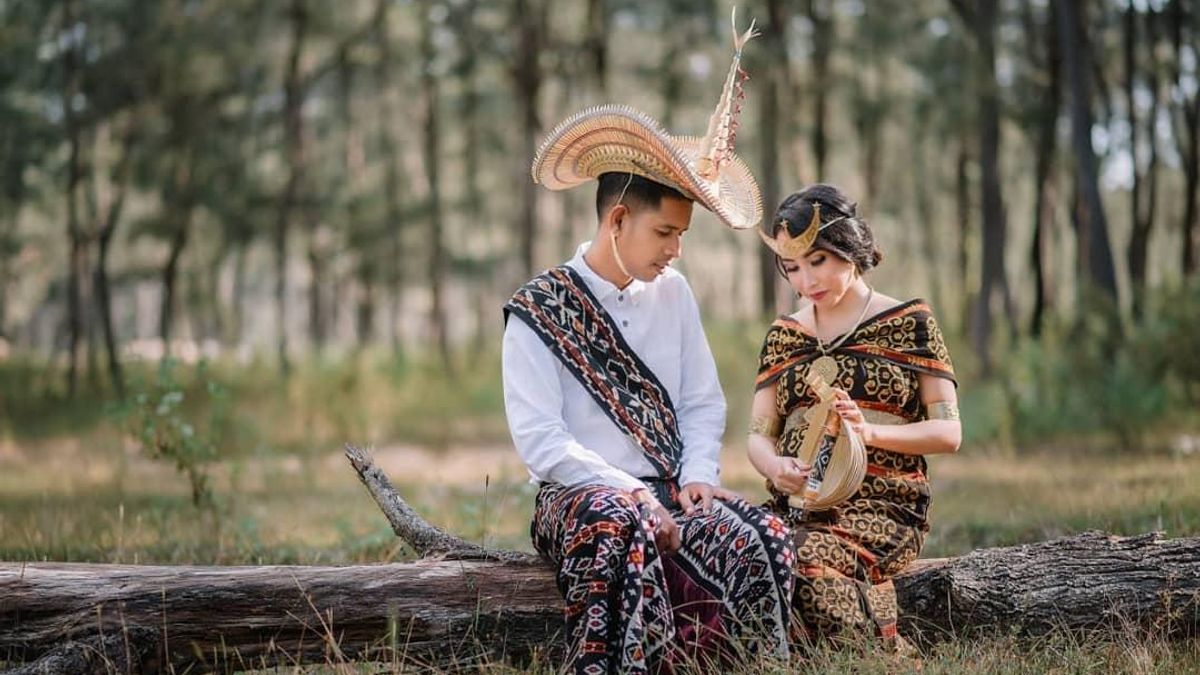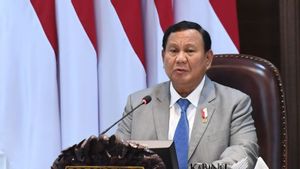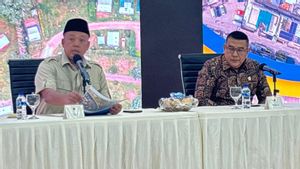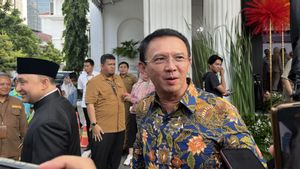JAKARTA NTT traditional clothing from various tribes is very interesting to note, considering that there are many tribes in the province who live on small islands.
NTT traditional clothing was once a public concern after being worn by President Joko Widodo (Jokowi) while giving a State Speech at the MPR Annual Session on August 18, 2020.
At that time, President Jokowi was seen wearing traditional clothes typical of Sabu, a tribe that inhabited Sawu Island and Raijua Island in East Nusa Tenggara (NTT).
The former mayor of Solo and the Governor of DKI Jakarta looked dashing and charismatic in traditional clothes in gold and black.
In addition to traditional Sabu clothes, NTT also has several other types of traditional clothes. What are they? Here we present the full information.
Compiled by VOI from various sources, several NTT traditional clothes from various tribes that inhabit the area include:
1. Rote traditional clothes
Quoting the book Traditional Asean Clothing (1991), the traditional Rote tribe dress consists of a sarong with a black baseline and floral and geometric motif. This traditional clothing is equipped with a brown scarf with a floral motif.
On the edge of the edge is rumbai. In addition, there is also a belt made of silver or gold.
Quoted from the official website of the Ministry of Education and Culture (Kemdikbud), Rote male traditional clothing is characterized by the use of gloves, blankets and hats.
Another characteristic that makes this traditional dress look unique is the ikat weaving motif used. During the wedding ceremony with Rote custom, woven fabrics are used as the completeness of wedding clothing, intermediate goods and the cover of the betel place when proposing to a girl.
Unlike with death ceremonies, woven fabrics are used to cover the bodies. Not only that, woven fabrics are also stretched at the bottom of the ceiling of the house to house the body beds. When the body was removed from the house to be buried, the woven fabric that was stretched was taken back and stored by the tribal head.
In the past, the use of rote woven fabrics reflected a person's social status. However, now, the use of woven fabrics no longer refers to social status. Special woven fabrics are still used for traditional ceremonies. However, currently many woven fabrics have been produced as souvenirs in various shapes, such as bags, accessories and headbands.
2. Traditional clothes of the Sabu tribe
NTT traditional clothes from the Sabu tribe that are usually worn by men are white shirts with long sleeves, scarves and subordinates.
The scarf worn is a woven sarong attached to the shoulder. In addition, there is still a headband made of gold from a mutisalak necklace, a pocket belt and necklace and neck jewelry.
Meanwhile, traditional shabu clothing for women is kebaya and woven cloth aka pending. This woven cloth is a sarong tied at the waist.
According to Duggan, an anthropologist from France, traditional clothes of the Sabu or Sawu tribe do not only function as body cover. But also as an identity and how they document history.
"In sawu, textiles are history," said Historia, quoted by VOI, Monday, April 5, 2021.
3. Traditional clothes of the Helong tribe
The third NTT traditional clothing comes from the Helong tribe. The traditional Helong ethnic clothes consist of two types. First, male traditional clothes in the form of large blankets tied to the waist for subordinates, bodo clothes or shirts, destars for headbands and habas or necklaces.
While the second is traditional clothes specifically for women. This shirt is in the form of kebaya, kemben, head jewelry in the form of a sickle moon. This shirt is equipped with additional accessories, such as gold belts, sarongs, gigang or karabu and moon-shaped necklaces.
4. Dawan traditional clothing
The traditional NTT clothing worn by the Dawan tribe is called a harmarium dress. For men, traditional clothes of abrasion consist of blankets of woven cloth and bodo clothes.
In addition, there are also a number of accessories, including necklaces, headbands with pearl decorations, timor bracelets and salak muti.
Meanwhile, the Dawan traditional clothes worn by women consist of woven filters, scarves, and kebaya. For additional accessories, this traditional dress is equipped with a muti salak necklace, a conde stab, a bracelet on the head, and also a gold comb.
5. Traditional Sumba clothing
Traditional clothes for people from the Sumba tribe, East Nusa Tenggara are actually not too many knick-knacks.
The men in the Sumba tribe usually wear broad cloth called hinggi to cover their bodies. Then, on the head, wear a wrapped and moldy head covering aka riara patang. There are also kabiala or machetes tucked around the left back of the belt, and canatar and mutisalak jewelry as bracelets.
Meanwhile, the traditional Sumba clothing for women is a sarong worn as high as the chest, then his shoulder is covered in a toba cloth with a color matching the sarong.
For accessories, Sumba women wear plain hikara or tiara motifs, rasanya for the forehead, mamuli is golden for gigang or earrings, as well as gold necklaces.
6. Traditional clothing from the Manggarai tribe
Men or women wearing traditional NTT clothes typical of the Manggarai tribe are required to include songke cloth. For men, the cloth is combined with a songke-motivated headband, long-sleeved white shirt, scarve and tubirapa (red small cloth).
As for women, dongke cloth is worn in the form of a sarong. Then it is equipped with head jewelry similar to a crown called Balibelo made of gold metal, as well as a scarf with songke motifs.
SEE ALSO:
7. Traditional clothes of the Lamaholot tribe
There are two kinds of traditional clothes from the Lamaholot tribe, namely Nowin and Kwatek. Nowin is a flat patterned woven cloth in the form of lines that are only worn by men. The accessors are kenobo (head ties) kalabala ( tusk Auction), Sendang, and pastipo (twink).
Kwatek is a traditional dress worn by a woman from the Lamaholot tribe. This dress includes a tent, namely a woven cloth made from silk which generally has the motif of a flower quantum. Then the crown of the moon on the forehead, a cydok (golden bead necklace), alo, a kalla (task eagle) earrings and a selawa ring.
The English, Chinese, Japanese, Arabic, and French versions are automatically generated by the AI. So there may still be inaccuracies in translating, please always see Indonesian as our main language. (system supported by DigitalSiber.id)
















